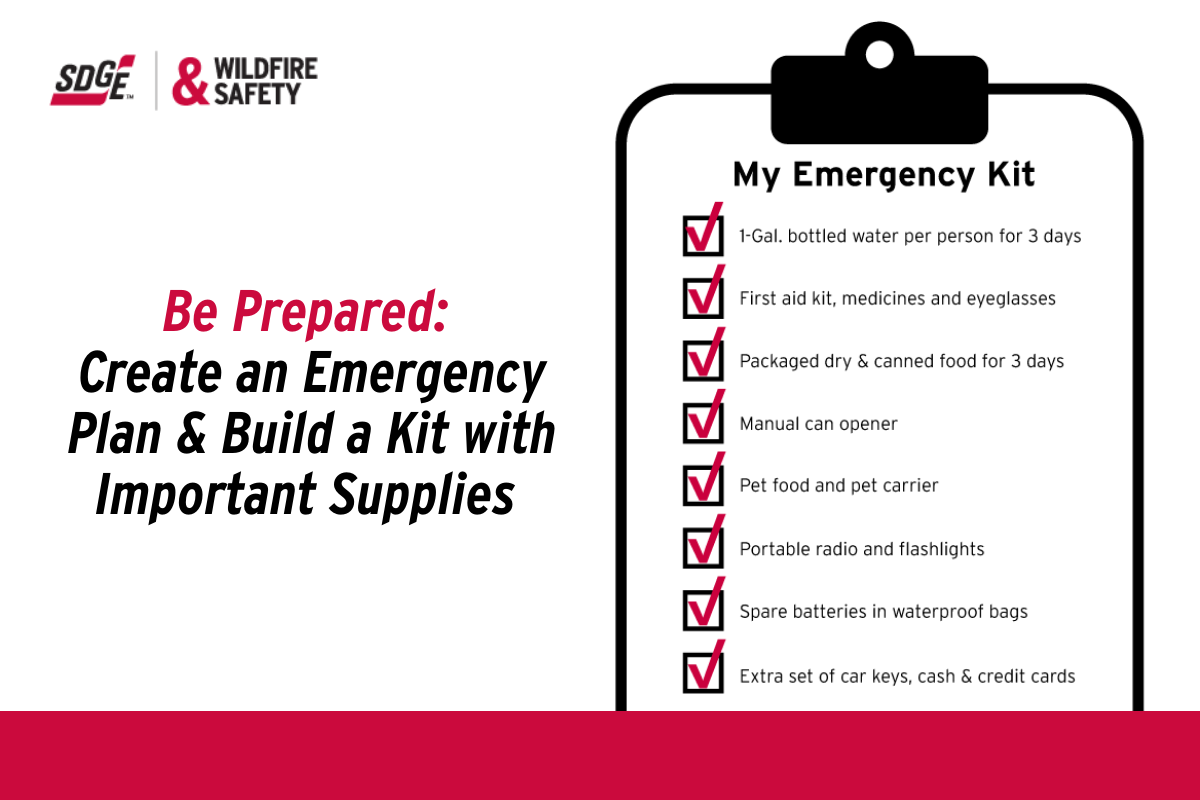Being ready for any emergency starts with having a plan and there is no better time to prepare than right now. Whether it be a wildfire, storm, earthquake, or even a power outage, taking steps to prepare your household, like writing out an evacuation plan or gathering important supplies in advance, can make all the difference when seconds matter. Here are some steps you can take to get started:
- Create an emergency plan for your household or family and practice it often. As you prepare your plan, consider any specific needs in your household. Ensure you also include a plan for pets, service animals and/or large animals, such as livestock.
- Identify two exits out of each room in your home.
- Determine at least two places (one outside of your home and the other outside of your neighborhood) where you and your household or family can meet if you are separated.
- Plan safe routes away from your home and work.
- Designate emergency contacts, including a friend outside the area who you can text or call in an emergency.
- Keep current important documents in a safe-deposit box, a waterproof container and/or scan and save copies electronically.
- Try to maintain a full tank of fuel in your vehicle.
- Make sure you’re informed. Update your contact information in My Account, sign up for outage notifications and download the Alerts by SDG&E app to your mobile devices.
- Review the emergency plans and evacuation routes at your workplace, your children’s school or daycare center and other places where family members may regularly spend time away from home.
In addition to a plan, you should also prepare an emergency kit with at least three to five days’ worth of important supplies in a portable container or bag that you can easily take with you if you need to evacuate quickly. Your kit should include:
- Three-day supply of drinking water (one gallon per person per day)
- Non-perishable food, including packaged, dried or canned goods
- Manual can opener
- First aid kit and important medicines
- Portable radio and flashlight
- Spare batteries in waterproof bags
- An extra set of car keys, cash and credit cards
- Supplies for infants, older adults or family members with disabilities
- Backup phone charger
- Extra clothes and hygiene supplies
- Mask and hand sanitizer
- A whistle to signal for help
- Copies of important documents (i.e., Photo identification, medical records, insurance information, etc.)
- If you have pets or service animals: Pet food, carrier, leash, medical records and important documents
For more information on what to include in your emergency kit and how everyone in your home can plan ahead for emergencies, please visit our emergency preparedness webpage.


